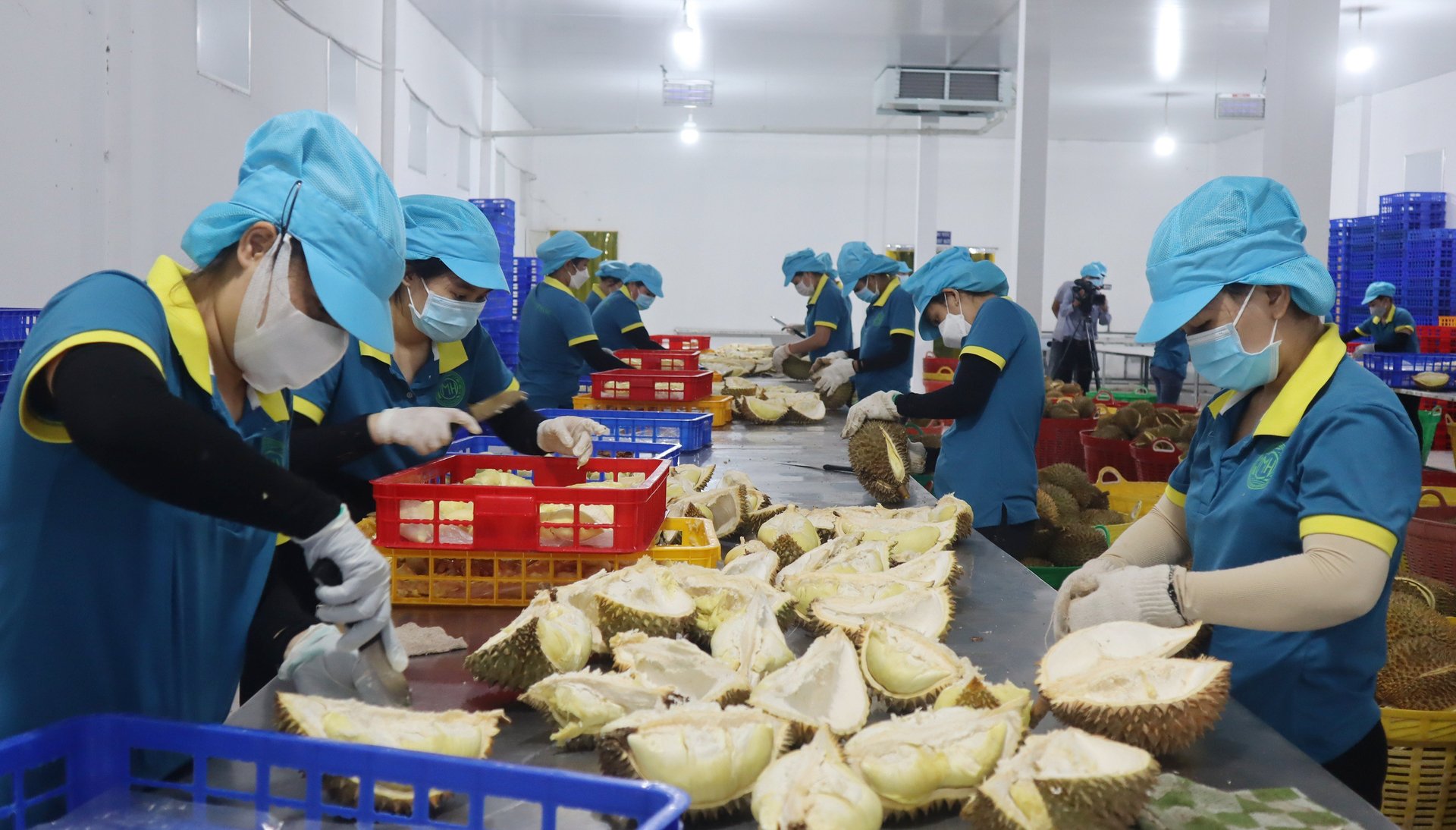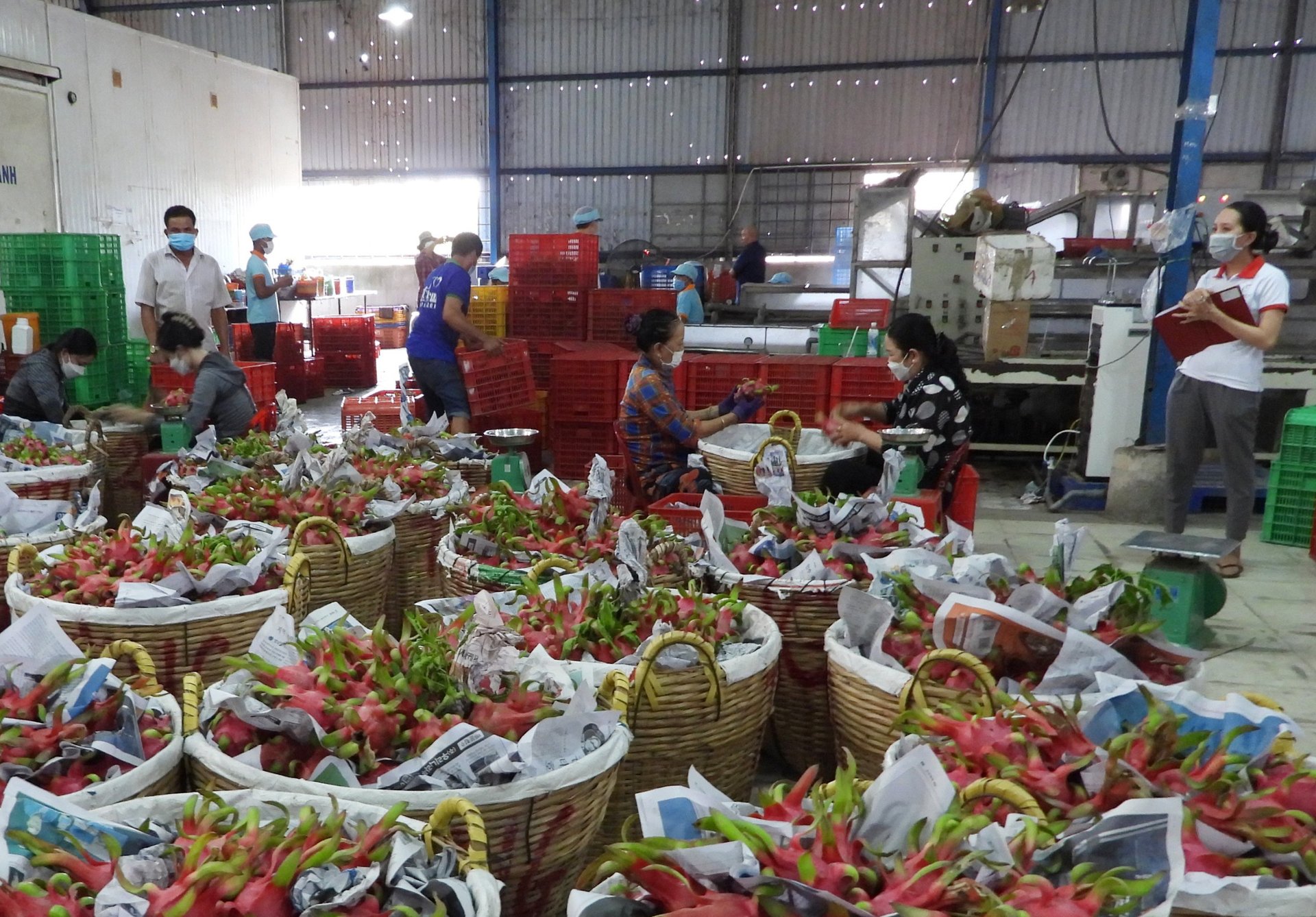November 9, 2025 | 17:42 GMT +7
November 9, 2025 | 17:42 GMT +7
Hotline: 0913.378.918
November 9, 2025 | 17:42 GMT +7
Hotline: 0913.378.918

In the first three months of the year, Vietnamese durian has not yet entered the main crop, so exports remain moderate. Durian began to have a large supply in April and May, the export of this item experienced a strong increase. Photo: Tran Trung.
According to Tran Phu Lu, Director of Ho Chi Minh City Investment and Trade Promotion Center (ITPC), China is currently considered Vietnam's biggest trading partner. Vietnam and China have many bilateral cooperation agreements, as well as multilateral agreements that promote agro-product exports.
Taking advantage of geographical proximity, Chinese people’s consumption habits have some similarities with Vietnamese, and the traditional trading relationship has existed for a long time, which creates a great advantage for Vietnamese export agro-products in this market.
However, China is now more strict on food commodity standards. Along with that, China's export products are very similar to Vietnam's, which in a sense creates challenges for Vietnamese goods.
Luong Van Tai, Trade Attaché, Department of Trade Affairs of the Vietnamese Embassy in China, said that the total import-export turnover between Vietnam and China in 2022 reached nearly USD 235 billion, up 2.1%.
Vietnam ranks 10th among countries exporting agro-products to China, export turnover in 2022 exceeded USD 6 billion, accounting for about 2.7% of this market’s total agro-product import value. Particularly in the group of vegetables and fruits, Vietnam is in the group of 3 countries with the most export turnover to the Chinese market (after Thailand and Chile).
According to Trade Attaché Tai, China's import and consumption demand for tropical fruits is still growing. It is forecasted that by 2026, China's fruit consumption and import will reach 319 million tons and nearly 15 million tons respectively. "In the near future, durian may take the lead among Vietnamese fruits in the Chinese market".
But a problem remains. Vietnam is currently in the group of 10 countries/territories with the highest number of warnings for the export of agro-products and foodstuffs. In particular, the errors are related to quality, food safety and hygiene (food additives beyond the allowable threshold, molds and pathogenic bacteria); documents attached to goods (lack of certification; goods not conforming to certificates; goods not yet allowed to be imported), and goods packaging labels do not meet regulations.
Meanwhile, the Chinese market in the coming period will focus on domestic demand and take domestic consumption as the driving force for economic growth. Chinese consumers, especially consumers in urban area, are increasingly interested in healthy, high-quality products with clear origins. “Enterprises need to promote the advantages of geographical location, production cost, transportation, and tropical products of Vietnam to fully exploit this major market, boosting the potential at maximum and meeting the demand," said Trade Attaché Tai.

China is one of the three largest import markets for Vietnam's agricultural, forestry and fishery products. Photo: Tran Trung.
According to Dinh Vinh Cuong, Chairman of 365 Group, in order to increase export turnover in the Chinese market, agricultural products need to be of good quality, meeting the needs of consumers. Regarding dragon fruit - one of Vietnam’s main export products to China, in addition to the requirements on quality, food safety and hygiene as prescribed, exporters need to pay close attention to the demands of each stage of this market.
As for the potential durian products, Chairman Cuong said, “China is expanding exploitation from many sources with different modes of transportation at the moment, so if Vietnam wants to dominate the market, it needs to improve the quality, reduce costs and maintain product reputation”.
Vietnam has 13 agricultural products officially exported to China, including bird's nest, sweet potato, dragon fruit, longan, rambutan, mango, jackfruit, watermelon, banana, mangosteen, litchi, passion fruit and durian.
In order to solidify exports to the Chinese market in the official route, the Chairman of 365 Group recommended enterprises develop a strategy for industry development, building a brand in parallel with standardizing production areas as well as concentrated and large-scale specialized farming areas based on signals from the market.
"Enterprises need to regularly update and comply with the Chinese market’s regulations on quality standards, testing, quarantine, packaging, traceability. They should have a strategy for logistics and build warehouses to preserve agro-products in border localities. This will help preserve the goods for a longer period and keep good quality when the delivery time is due," said Chairman Cuong.
Translated by Samuel Pham
/2025/11/08/4950-1-163820_289.jpg)
(VAN) During the 2021–2025 period, Viet Nam's agro-forestry-fishery processing industry has made remarkable progress, achieving an average growth rate of 8%/year.

(VAN) Over 80 years, Vietnamese rice has journeyed through half a century to become a symbol of knowledge, resilience, and the new nation’s agriculture stature.

(VAN) The traders estimated that the lowest price in the tender, closed on Thursday by Bangladesh's state grain buyer, to buy 50,000 metric tonnes of rice was $355.59 per metric ton CIF, liner out.

(VAN) The information shared by Dr. Ngo Xuan Nam, Deputy Director of Viet Nam Sanitary and Phytosanitary Notification Authority and Enquiry Point (SPS Viet Nam), on October 30 during a conference on food safety regulations.

(VAN) Viet Nam mainly exports raw Bat Do bamboo shoots for deep processing, so premium products appear only on dining tables in Japan and Taiwan.

(VAN) Tafa Group CEO emphasized, 'It is essential to strengthen communication efforts so that 'Made in Vietnam’ egg brand not only maintains a strong foothold domestically but also reaches into export markets.'

(VAN) Building on its leading position, Ho Chi Minh City drives a green, digital, and creative wood industry toward global reach and its goal of joining the world’s top 100 most livable cities by 2045.